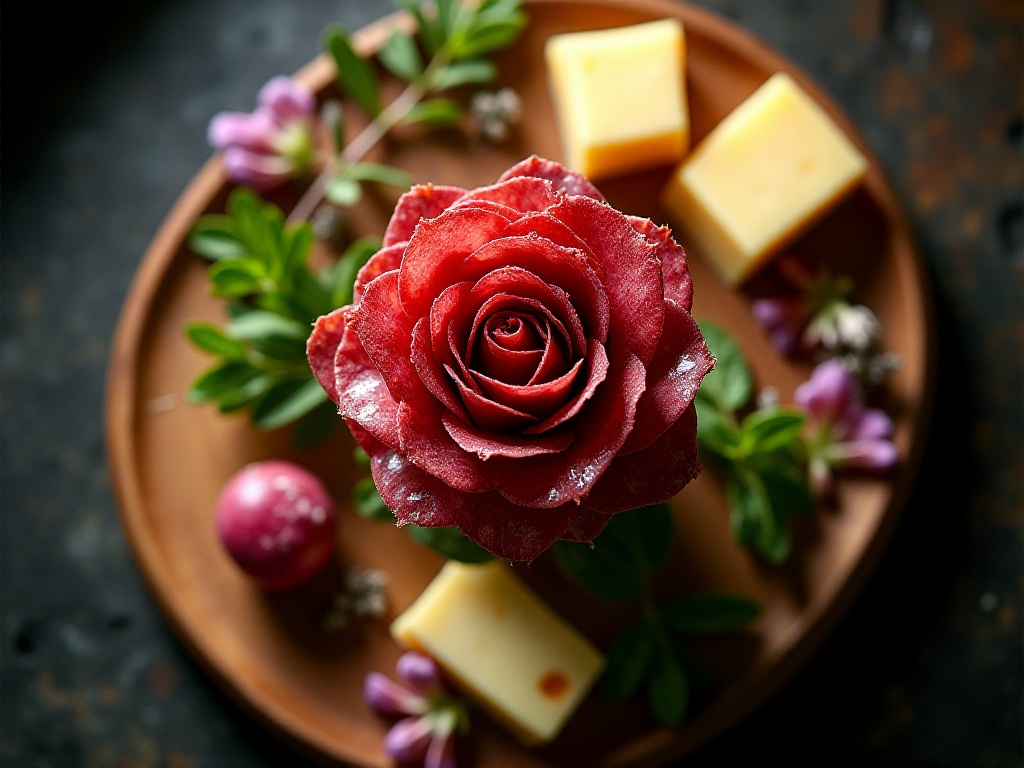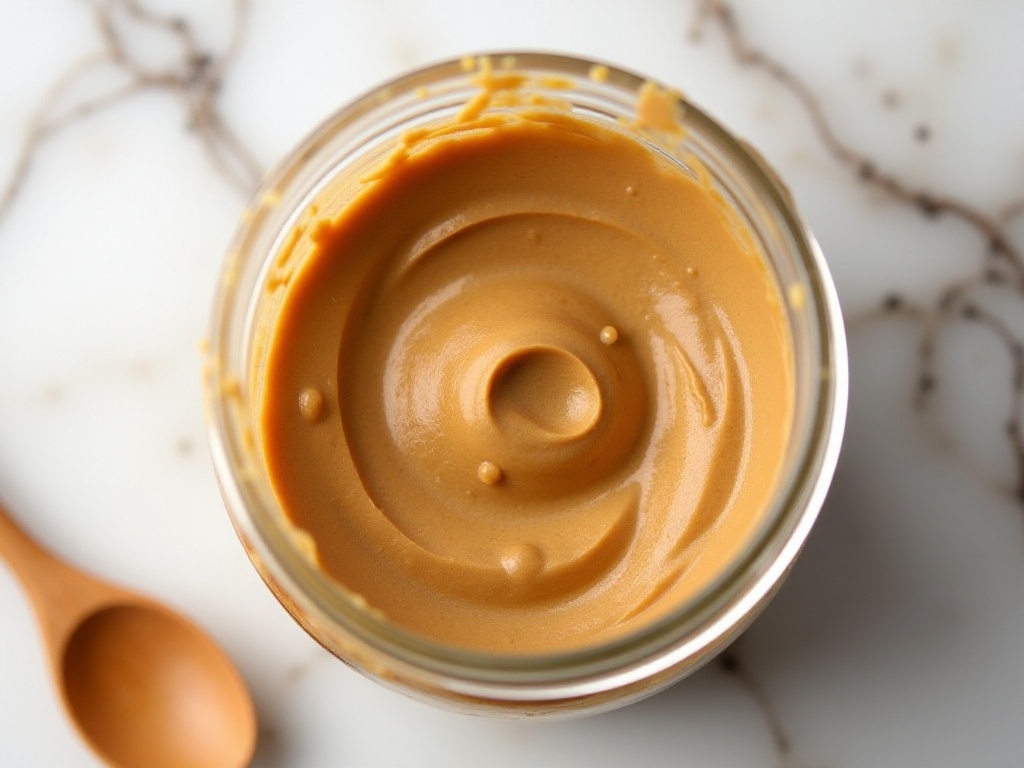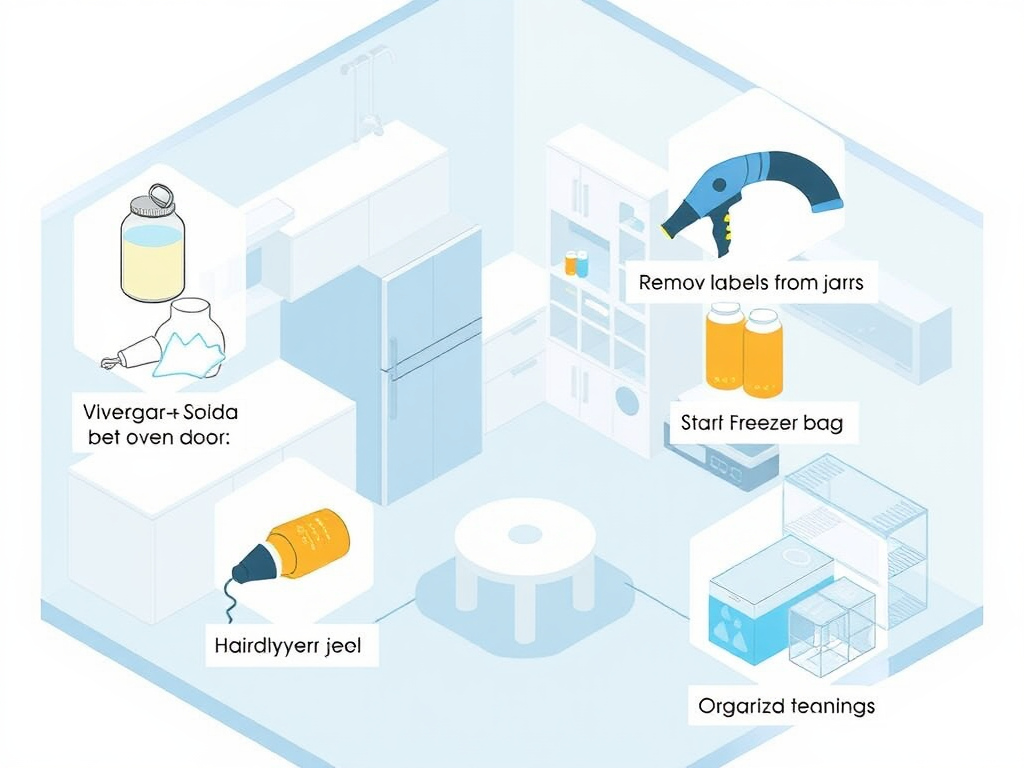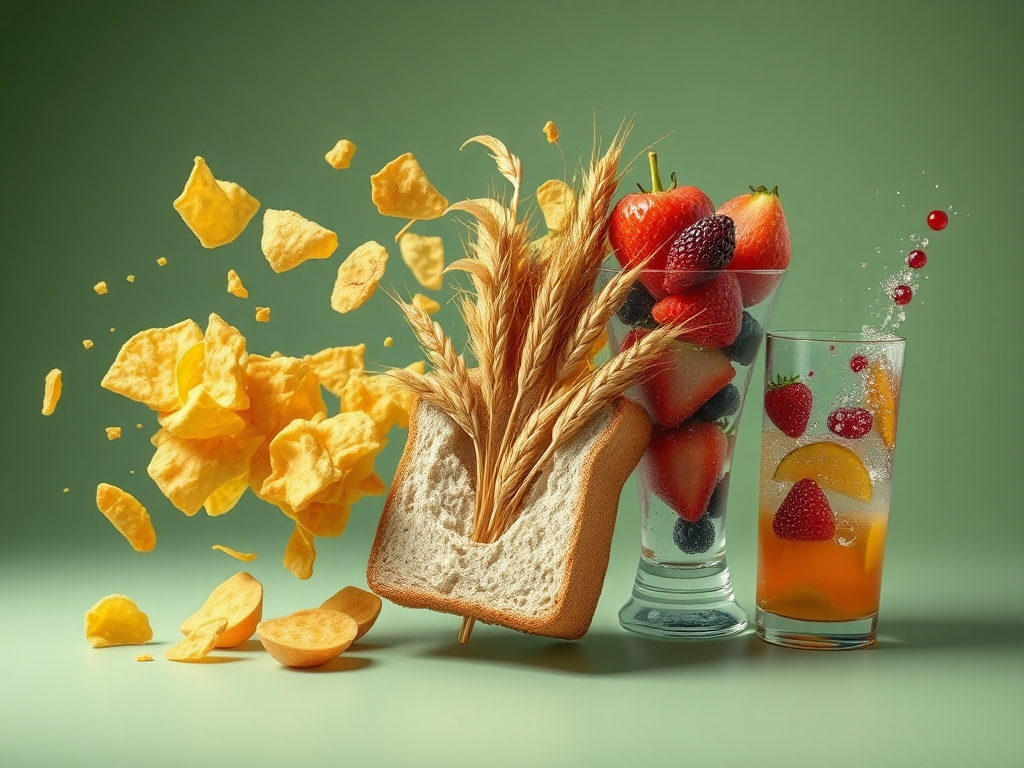
Introduction
As a beginner cook, I deeply understand the struggles in the kitchen. Watching professional chefs' fluid movements in cooking videos compared to my own clumsy actions shows a world of difference. I'm always awkward when handling ingredients - even something seemingly simple like peanut butter gives me headaches. Opening the lid to find a layer of oil on top and dry paste below, stirring often results in oil splatters everywhere - on clothes and countertops. Herb leaves drive me crazy, making my hands sore from picking, yet they still stubbornly cling to the stems. Not to mention frozen foods in the fridge - finding frozen dumplings means turning everything upside down. Recently though, I've finally figured things out and discovered many useful tips that I'd like to share with fellow kitchen warriors.
Ingredient Preparation
Peanut butter, a seemingly simple ingredient, actually holds secrets. I remember my first time buying peanut butter - excitedly opening the lid only to find oil floating on top and rock-hard paste below. I wondered how to mix it properly? Stirring with a spoon causes splashing; not stirring makes it inedible. Later, I learned a trick from a food blogger: store new peanut butter upside down overnight. When opened the next day, the oil will have permeated the paste. Then, starting from the jar's edge, slowly circle toward the center while gently stirring, and the peanut butter becomes smooth and uniform, spreading perfectly on bread without any dryness.
Handling herb leaves is truly skillful work. My previous method of processing herbs was pure self-torture - picking leaf by leaf, making my hands sore with terrible efficiency. Once, watching a foreign chef's video, I discovered an alternative approach: use a fork, start from the stem's bottom, and gently scrape against the leaf growth direction - the leaves fall like rain. This trick works wonders for basil leaves; what used to take ten minutes now takes just two. The same principle applies to thyme, especially for varieties with tiny leaves - this method is incredibly satisfying.
Slicing ginger used to seem particularly troublesome. Ginger's texture made slicing difficult, resulting in either thick or crooked pieces. Now I've learned to peel ginger with a spoon, cut it into small sections, then slice horizontally. This produces even, consistent thickness. There's also a trick for garlic - shake it vigorously between two bowls, and the cloves separate completely, eliminating the need to peel them one by one.
For leafy vegetables like chives, cutting often feels dull, leaving frayed edges. I later discovered that soaking chives in salt water before cutting not only removes pesticide residues but also makes cutting smoother and creates cleaner edges.

Food Storage
Organizing frozen foods has always been challenging. I used to lay freezer bags flat in the freezer, requiring removing all bags on top to find what I needed, then waiting ages for it to thaw. Now I'm smarter - after categorizing ingredients, I label the freezer bags with dates and contents, then store them vertically like books. This makes everything visible at a glance and easy to retrieve. Better yet, since the bags are stored vertically, the ingredients maintain even thickness, thawing much faster.
Cheese is a love-hate ingredient. Soft cheese often sticks to packaging; cutting with a knife always leaves residue, wasting food and looking messy. Now I use dental floss: pass the floss or thin string through the bottom of the packaging, slowly pull upward like cutting cake, and the cheese comes off completely without waste. This method works great for rice cakes too - no more worrying about them sticking to the knife.
Vegetable storage is also scientific. After buying lettuce, I carefully wash each leaf, dry them with kitchen paper, then store them in preservation bags in the refrigerator. Lettuce processed this way stays fresh for several days. Herbs require more attention - I place them like flowers in water-filled glass cups, covered with preservation bags, keeping them fresh for over a week in the refrigerator.

Plating Techniques
Many think plating is only for Michelin restaurants. Actually, elegant plating at home not only makes food more appetizing but adds ceremony to meals. Take salami roses - this sophisticated presentation is surprisingly easy: prepare a glass, stick salami slices along the inner wall, slightly overlapping each piece. After filling the glass, gently turn it upside down and slowly lift - a beautiful salami rose appears. This technique works equally well for ham slices, roast beef slices, and other sliced ingredients.
Fruit platters are great opportunities for creativity. I like cutting different colored fruits into similar-sized pieces, arranging them in rainbow order. For example, start with red strawberries, then orange segments, yellow pineapple, green kiwi, with blueberries as accents. This arrangement looks beautiful and showcases vitamin variety.
For snack presentation, I have a special idea: turn a wine glass upside down - the base becomes a perfect sauce bowl while the stem holds chips or breadsticks. This looks creative and makes serving convenient without messy sauce-covered hands.
Cake cutting is also an art. To cut a round cake into even pieces, first mark a cross on the surface with dental floss, then make two cuts in each quarter for eight uniform pieces. For smaller portions, halve each eighth to get sixteen equal cake slices.

Cleaning Tips
Cleaning oven doors has always been challenging. Oil stains and food debris seem fused to the glass after high-temperature baking. I tried various cleaners with disappointing results. Then I discovered this method: make a paste with baking soda and white vinegar (about three spoons baking soda to two spoons vinegar), spread evenly on the oven door glass. Wait ten minutes for the chemical reaction to soften the grease. Wipe with a damp cloth, and stubborn stains come off easily. For particularly tough spots, use a scraper gently.
Cookware cleaning requires skill, especially burnt bottoms. I used to scrub hard, scratching the pots while the burnt residue remained. Now I pour warm water just covering the bottom, add a fresh lemon slice (or juice) and a spoon of baking soda. Bring to boil, simmer for five minutes. Let cool naturally, and the stubborn residue scrubs off easily. This method is eco-friendly and minimally damaging to cookware.
For cutting board cleaning and deodorizing, I have a unique method. After cutting onions, ginger, garlic, or seafood, boards retain strong odors. Rub half a lemon with salt across the board to remove odors and disinfect. After regular use, I rinse with water, sprinkle salt, and let dry. This keeps boards dry and prevents mold.
Range hoods need regular cleaning. I periodically remove the filters, soak in hot water with detergent and baking soda for thirty minutes, then gently scrub with a soft brush. This removes grease and maintains suction power.

Final Thoughts
These tips have made my kitchen life much easier. Cooking isn't difficult; it's about knowing the right methods. Behind each seemingly simple step lie tricks that can double our efficiency. These experiences come from my continuous trials and failures, hopefully helping fellow kitchen enthusiasts.
Honestly, my favorite trick is the herb leaf method - it truly freed my hands. No more spending excessive time on herbs. The salami rose plating technique also always impresses friends.
Many interesting kitchen tricks await discovery. If you have unique techniques, please share. Let's exchange ideas, improve together, and make cooking more fun and easier.
Which tip interests you most? Want to try it in the kitchen now? Trust me, once you master these techniques, you'll find cooking incredibly rewarding.
Next
Is Drinking More Water Also a Skill? 8 Practical Tips to Make Drinking Water Super Easy
A comprehensive guide covering healthy lifestyle management and practical life tips, including balanced diet principles, nutritional supplements, weight management, exercise plans, kitchen skills and home organization methods
10 Super Practical Home Organization Tips to Keep Your Home in Perfect Order
Discover practical life hacks covering home organization, daily productivity enhancement, and electronic device usage tips to create a more efficient and comfortable lifestyle
A Surprising Truth About Nutrition: Is Healthy Eating Really That Hard?
Discover essential nutrition and diet tips, including balanced eating habits, nutritional supplements, weight management, and hydration, along with practical kitchen and household cleaning techniques
Next

Is Drinking More Water Also a Skill? 8 Practical Tips to Make Drinking Water Super Easy
A comprehensive guide covering healthy lifestyle management and practical life tips, including balanced diet principles, nutritional supplements, weight management, exercise plans, kitchen skills and home organization methods

10 Super Practical Home Organization Tips to Keep Your Home in Perfect Order
Discover practical life hacks covering home organization, daily productivity enhancement, and electronic device usage tips to create a more efficient and comfortable lifestyle

A Surprising Truth About Nutrition: Is Healthy Eating Really That Hard?
Discover essential nutrition and diet tips, including balanced eating habits, nutritional supplements, weight management, and hydration, along with practical kitchen and household cleaning techniques


